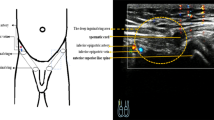Abstract
There is a controversy in the literature whether testicular nubbins carry malignancy risk and excision of the nubbin is necessary in patients with nonpalpable testis. It is also controversial whether vanishing testis has the same etiopathogenesis and risk with true undescended testis. The aim of this study is to investigate the histological findings of testicular nubbins in patients with nonpalpable testis and to question etiology and surgical indications for vanishing testis. We reviewed the histopathological results of 44 testicular nubbins in 40 patients (mean age: 4.1 years, range 1–13 years) with nonpalpable testis between 1992 and 2004, retrospectively. Exploration revealed 5 intraabdominal and 39 inguinal testicular nubbins. Of 44 specimens only 5 (11.3%) from inquinal testicular nubbins were found to have seminiferous tubules. Two of the five had seminiferous tubule structures with viable germ cells showing maturation correlating with age. The other two with scarce seminiferous tubules were seen on only a single area and one had Sertoli cells only. None of the excised tissue had malignant degeneration. The vas deferens was identified in 23 (52.2%), vessels in 26 (59%), calcification in 14 (31.8%) and hemosiderin in 12 (27.2%) of excised tissue. Presence of calcification in one-third of the nubbins supports vascular accident thesis in the etiopathogenesis of vanishing testis. The possibility for the presence of seminiferous tubules and viable germ cells in the testicular nubbin is low. These facts decrease theoritical risk of malingnancy. Therefore, an inguinal exploration for testicular nubbin in patients with vas deferens and vessels entering into the inquinal canal diagnosed at laparoscopy can be postponed untill testicular prosthesis implantation and the nubbin can be removed at this operation.
Similar content being viewed by others
References
Abeyaratne MR, Aherne WA, Scott JES (1969) The vanishing testis. Lancet 2:822–824
Anderson MJ, Dunn JK, Lipshultz LI, Coburn M (1992) Semen quality and endocrine parameters after acute testicular torsion. J Urol 47:1545–1550
Batata MA, Withmore WF Jr, Chu FCH et al (1980) Cryptorchidism and testicular cancer. J Urol 124:382
Belman AB, Rusthon HG (2001) Is the vanished testis always a scrotal event? Br J Urol Int 87:480–483
Belman AB, Rusthon HG (2003) Is empty left hemiscrotum and hypertophied right descended testis predictive of perinatal torsion? J Urol 170:1674–1676
Brasso K, Andersen L, Kay L, Wille-Jorgensen P, Linnet L, Egense J (1993) Testicular torsion: a follow-up study. Scand J Urol Nephrol 27:1–6
Cendron M, Schned AR, Ellsworth PI (1998) Histological evaluation of the testicular nubbin in the vanishing testis syndrome. J Urol 160:1161–1162
Chilvers CE, Pike MC, Peckham MJ (1987) Torsion of the testis: a new risk factor for testicular cancer. Br J Cancer 55:105–106
De Luna AM, Ortenberg J, Craver RD (2003) Exploration for testicular remnants: implications of residual seminiferous tubules and crossed testicular ectopia. J Urol 169:1486–1489
Fonkalsrud EW (1970) Current concepts in the management of the undescended testis. Surg Clin North Am 50:847–852
Grady RW, Mitchell EM, Carr MC (1998) Laparoscopic and histologic evaluation of the inguinal vanishing testis. Urol 52:866–869
Hadziselimovic F, Geneto R, Emmons LR (1998) Increased apoptosis in the contralateral testes of patients with testicular torsion as a factor for infertility. J Urol 160:1158–1160
Huff DS, Wu HY, Snyder HM III, Hadziselimovic F, Blythe B, Duckett JW (1991) Evidence in favor of the mechancal (intrauterin torsion) theory over the endocrinopathy (cryptorchidism) theory in the pathogenesis of testicular agenesis. J Urol 146:630–631
Merry C, Sweeney B, Puri P (1997) The vanishing testis: anatomical and histological findings. Eur Urol 31:65–67
Nishizawa S, Suzuki K, Tachikawa N et al (2000) The vanishing testis: diagnosis and histological findings (Abstract). Nippon Hinyokika Gakkai Zasshi 91:537–541
Puri P, Barton D, O’Donnell B (1985) Prepubertal testicular torsion: subsequent fertility. J Pediatr Surg 20:598–601
Redman F (1980) Impalpable testis: observations based on 208 consecutive operations for undescended testis. J Urol 124:379–381
Rozanski TA, Wojno KJ, Bloom DA (1996) The remnant orchiectomy. J Urol 155:712–714
Rybkiewicz M (2001) Long-term and late results of treatment in patients with a history of testicular torsion (Abstract). Ann Acad Med Stetin 47:61–75
Smolko MJ, Kaplan GW, Brock WA (1983) Location and fate of the nonpalpable testis in children. J Urol 129:1204–1206
Spires ES, Woolums CS, Pulito AR, Spires SM (2000) Testicular regression syndrome, a clinical and pathological study of 11 cases. Arch Pathol Lab Med 124:694–698
Sutcliffe JR, Wilson-storey D, Smith MA (1996) Ante-natal testicular torsion: only one cause of testicular regression syndrome? J R Coll Surg Edinb 41:99–101
Swerdlow AJ, Higgins CD, Pike MC (1997) Risk of testicular cancer in cohort of boys with cryptorchidism. BMJ 314:1507–1511
Tekant G, Emir H, Eroglu E, Akman M, Buyukunal C, Danismend N, Soylet Y (2001) Experience with laparoscopy in nonpalpable testes. Eur J Pediatr Surg 11:177–81
Turek PJ, Ewalt DH, Snyder HM III et al (1994) The absent cryptorchid testis: surgical findings and their implications for diagnosis and etiology. J Urol 151:718–720
Vinci G, Anjot MN, Trivin C, Lottmann H, Brauner R, McElreavey K (2004) An analysis of the genetic factors involved in testicular descent in a cohort of 14 male patients with anorchia. J Clin Endocrinol Metab 89:6282–6285
Yerkes EB, Robertson FM, Gitlin J, Kaefer M, Cain MP, Rink RC (2005) Management of perinatal torsion: today, tomorrow or never? J Urol 174:1579–1582
Author information
Authors and Affiliations
Corresponding author
Rights and permissions
About this article
Cite this article
Emir, H., Ayık, B., Eliçevik, M. et al. Histological evaluation of the testicular nubbins in patients with nonpalpable testis: assessment of etiology and surgical approach. Pediatr Surg Int 23, 41–44 (2007). https://doi.org/10.1007/s00383-006-1802-9
Accepted:
Published:
Issue Date:
DOI: https://doi.org/10.1007/s00383-006-1802-9




